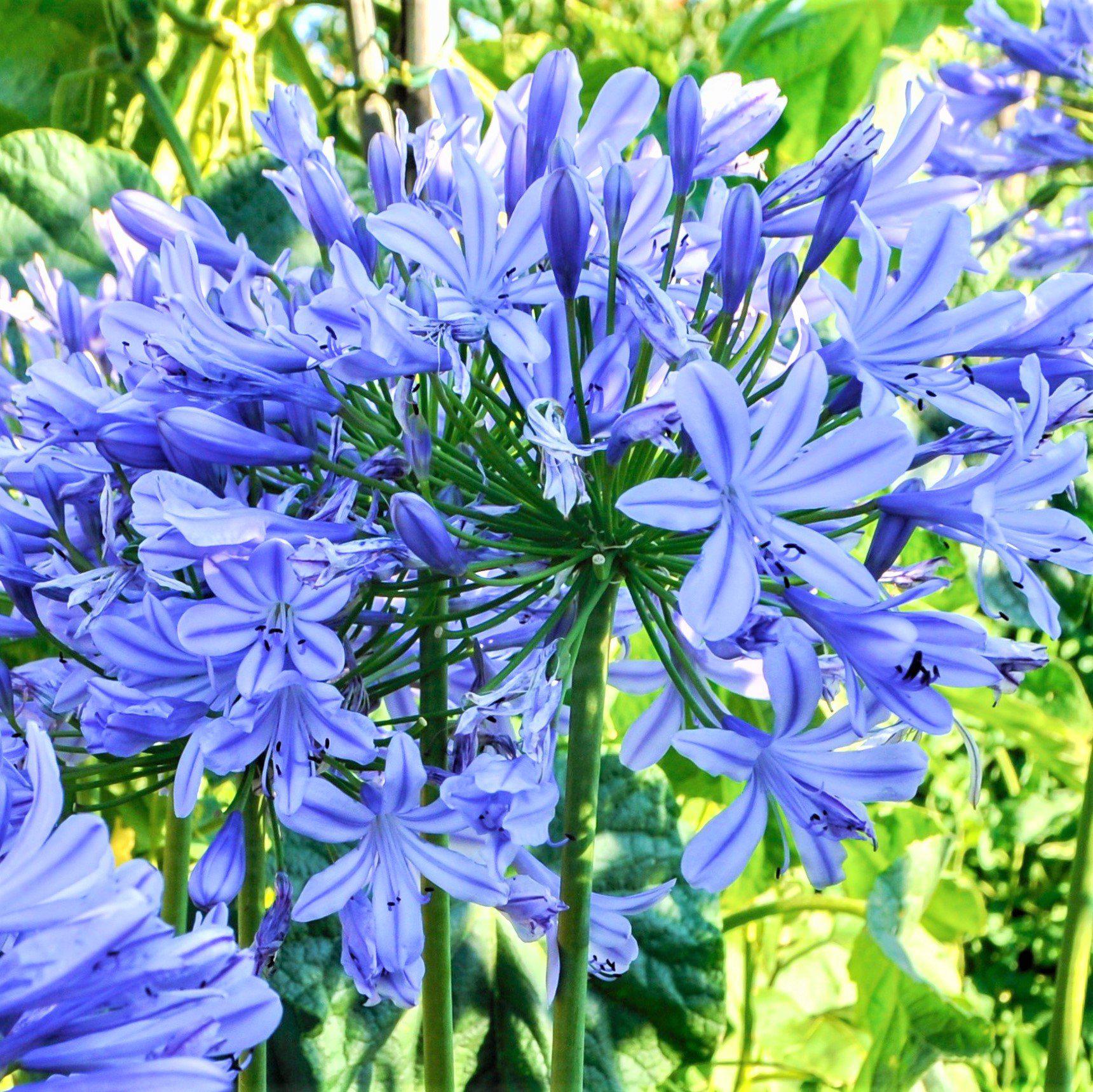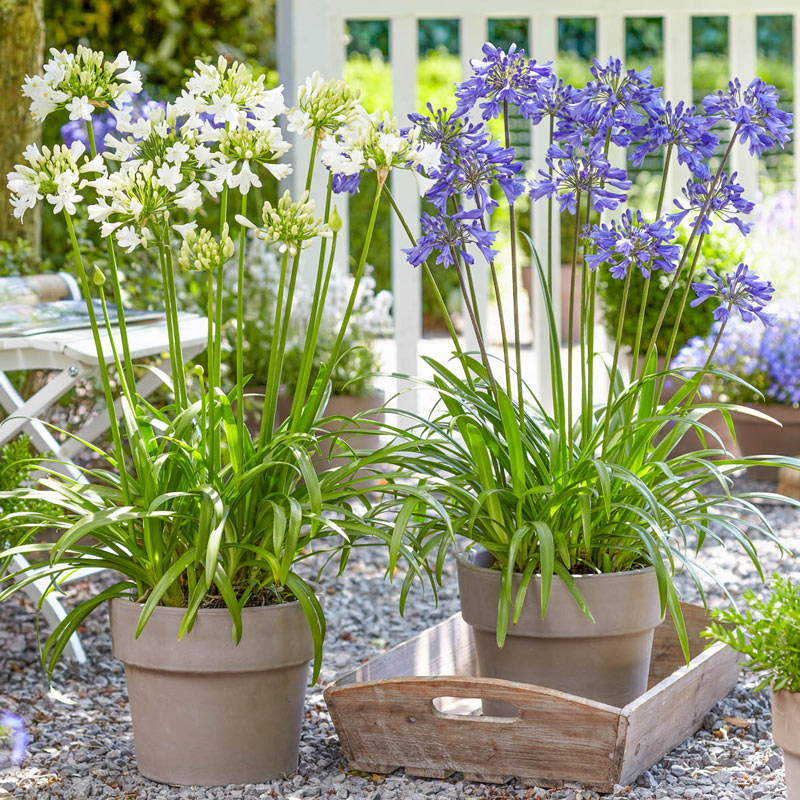Agapanthus Growing Conditions: Dirt, Sunlight, and Watering
Agapanthus Growing Conditions: Dirt, Sunlight, and Watering
Blog Article
Understanding the Art of Agapanthus Treatment: Vital Steps for Healthy And Balanced Development and Vivid Blossoms
In the world of horticulture, the growing of agapanthus stands as a satisfying endeavor for those that look for to support these elegant flowering plants. With their striking blooms and elegant foliage, agapanthus has captured the focus of garden enthusiasts worldwide. Nonetheless, accomplishing optimal growth and vibrant blossoms needs a nuanced method that encompasses numerous essential actions. From choosing the right variety to mastering pruning strategies, the trip towards growing thriving agapanthus plants is complex and holds the vital to opening the complete capacity of these agricultural treasures.

Picking the Right Agapanthus Range

When picking the ideal Agapanthus variety for your garden, think about aspects such as environment suitability, flower color, and growth routine. Agapanthus, frequently referred to as Lily of the Nile or African lily, comes in a variety of colors varying from shades of blue and purple to white. Select a flower color that enhances your existing garden palette to create an unified landscape. Additionally, consider the climate in your region to ensure the Agapanthus range you pick can thrive in your certain problems. Some ranges are extra tolerant of chilly temperature levels, while others like warmer climates. Comprehending the growth habit of different Agapanthus ranges is crucial for correct placement within your garden. Some selections have a clumping development practice, ideal for borders or containers, while others have an even more spreading nature, appropriate for ground cover or mass plantings. By carefully assessing these elements, you can pick the perfect Agapanthus variety to boost the elegance of your garden.
Perfect Growing Conditions
Thinking about the optimal environmental needs is essential for successful Agapanthus growing. Agapanthus plants are delicate to cool temperatures and ought to be shielded from frost throughout winter months.
To guarantee healthy growth and vibrant blooms, plant Agapanthus light bulbs at a deepness of regarding 2-4 inches and room them 8-12 inches apart. Including raw material, such as garden compost, to the dirt can enhance drainage and fertility, advertising robust origin growth. Mulching around the base of the plants assists maintain dampness and reduces weed development. Normal watering is essential, especially during the growing period, to keep the dirt continually moist yet not soaked.
Watering and Feeding Tips
Keeping appropriate wetness degrees and supplying crucial nutrients are essential components in the treatment program for Agapanthus plants. When it comes to watering Agapanthus, it is essential to strike an equilibrium. company website These plants choose regularly damp dirt but are vulnerable to root rot if overwatered.
Fertilizing Agapanthus is crucial for advertising healthy and balanced growth and prolific flowers. Apply a well balanced plant food, such as a 10-10-10 formula, in the very early springtime as new growth emerges. By complying with these watering and feeding tips, you can ensure your Agapanthus plants flourish and create vivid, lasting flowers.
Pruning Methods for Agapanthus
Trimming Agapanthus plants at the appropriate times and with proper methods is essential for keeping their health and advertising optimal growth and blooming. The perfect time to trim Agapanthus remains in late wintertime or very early spring prior to new growth emerges. Begin by eliminating any kind of yellowing or dead fallen leaves near the base of the plant. Cut them as short as feasible without harming the emerging shoots.
Deadheading spent blossoms can also reroute the plant's energy into producing more blossoms instead than establishing seeds. If you desire to accumulate seeds for proliferation, leave some flowers to fully grown and dry on the plant.
Keep in mind to make use of tidy, sharp tools to make exact cuts and lower the danger of presenting illness. Agapanthus. Regular pruning will certainly aid maintain your Agapanthus looking healthy and neat while guaranteeing a bountiful screen of beautiful blossoms
Managing Typical Pests and Conditions
After guaranteeing appropriate pruning strategies for Agapanthus, it is necessary to attend to usual parasites and conditions that can affect the wellness and vigor of these plants. Agapanthus plants are generally durable but can still succumb to particular concerns. One typical bug that influences Agapanthus is the Agapanthus gall midge. This tiny, orange fly find lays its eggs in the foliage, causing distorted growth and flower buds that fail to open. To combat this parasite, trim and damage any type of damaged plant parts and consider making use of insecticidal soap.
Additionally, Agapanthus plants can suffer from root rot if click for more info they are grown in poorly draining pipes dirt. By being alert and taking timely action versus pests and conditions, you can assist your Agapanthus plants prosper and produce vibrant flowers. Agapanthus.

Verdict
In conclusion, understanding the art of agapanthus treatment involves choosing the appropriate range, providing excellent planting conditions, correct watering and feeding, ideal pruning strategies, and dealing with typical insects and diseases. By following these vital actions, you can guarantee healthy growth and dynamic blossoms for your agapanthus plants. Bear in mind to regularly keep track of and maintain your plants to promote their total well-being and durability.
To make certain healthy development and lively flowers, plant Agapanthus light bulbs at a deepness of regarding 2-4 inches and area them 8-12 inches apart. By adhering to these watering and feeding suggestions, you can ensure your Agapanthus plants prosper and produce vivid, long-lasting blossoms.
One usual bug that impacts Agapanthus is the Agapanthus gall midge. In addition, Agapanthus plants can suffer from root rot if they are grown in inadequately draining dirt. By adhering to these vital steps, you can ensure healthy and balanced growth and vibrant flowers for your agapanthus plants.
Report this page